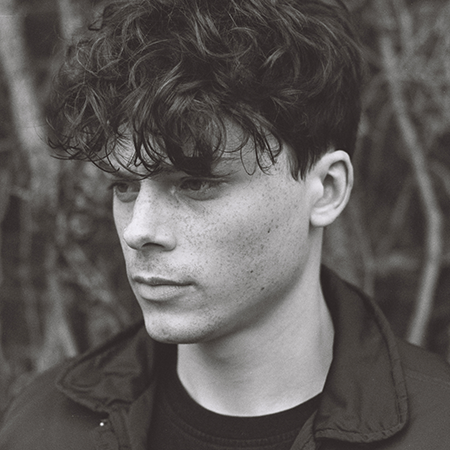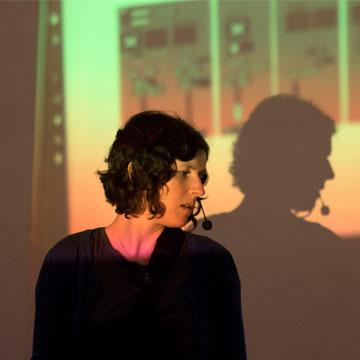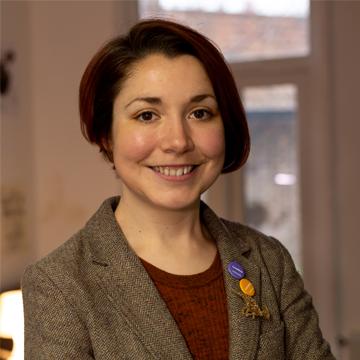Simon Hale
Simon Hale has worked with major artists including Björk, Madness, Jamiroquai and Will Young.
Main details
BAFTA and Tony award winning composer, arranger and keyboard player Simon Hale has worked with major artists including who has worked with Björk, Madness, Jamiroquai and Will Young. He graduated from the BMus Music degree in 1985.
In what ways did studying at Goldsmiths shape your career?
I can trace back every bit of work I’ve ever done not only to the BMus course itself, but to an advert I saw on a Goldsmiths’ noticeboard as I walked between the concert hall and the coffee shop. The advert was looking for a piano player to accompany a singer doing Billie Holliday songs in wine bars in the West End. Through that I met a guitarist who recommended me to a drummer (and so on), and by the time I’d done my finals I was doing enough gigs to make some kind of a living as a musician.
I also attended a summer course in between my second and third years that Stanley Glasser (then head of the Department of Music) had organised. It was called ‘The Mechanics of Film Scoring’, and it was devised and run by an American composer Don Ray, who Stanley invited over during the holidays. It was a pivotal moment for me as it forced me to write my own music where previously I had always considered myself as ‘just’ a musician. I will never forget the moment in the recital room where I played the piano piece I had just written to the rest of the class and then went through a moment of self-doubt and fear just before anyone said anything. Fortunately, when it came, the response was favourable! At the end of the course, Don Ray kindly invited me to travel to Los Angeles and perform a piece for piano and strings for the ensemble that he directed. I did this in the February of my third year and it really set me off on the path that I’ve followed on and off since then.
What is the starting point for a composition? How do you go about the process of writing music?
It depends. I tend to do more thinking these days rather than sitting down at the piano, as I prefer to use my inner ear to imagine sounds. As a piano player, I find that playing can sometimes be too prescriptive, and I like to imagine the actual sounds rather than the piano playing a representation of them. Either way, at some point you just have to jump in at the deep end. Sometimes I can imagine whole sections/sounds in a finished form; sometimes it takes an age to do 8 bars.
What’s been your biggest compositional challenge?
One of the most challenging things I’ve ever done as a composer was with a band called The Bays. It was collaboration with John Metcalfe, and we both had to write the orchestral music for the concert live on stage (the entire performance is improvised from start to finish) The orchestral musicians would read what we had written (sometimes just seconds previously) from screens that showed a copy of what we had done. We would take to the stage having no idea what was about to happen over the next 60-90 minutes or so and would have to keep writing music for the orchestra to play over that period. Here’s a little clip of how we did it the first time.
You’ve worked across a huge number of different genres, how do you manage to adapt your style?
I try not to be ‘pastiche’ but just to trust my instinct. I’m a very strong believer in everyone having their own voice, and learning to trust it is essential to expressing yourself. I don’t know what causes us to make decisions about which note sounds better than another but it’s something that we should always follow if we want to create music that has some identity and character rather than being anonymous or generic.
Which collaboration are you proudest of?
My long-standing relationship (as an arranger and orchestrator) with Duncan Sheik has produced some great results that I’m very proud of, including our work on Spring Awakening that went on to win the Tony award for Best Orchestrations. Also doing arrangements for Incognito and Jamiroquai has allowed me to have a lot of fun working within the style of music that I grew up listening to and has led on to lots of other things. At Goldsmiths I learnt a very valuable lesson about collaborating when a trumpet player, having played one of my pieces, said to me “we do need to breathe, you know!” Getting the parts right by thinking about the person who is going to be playing them is an essential part of a composer and orchestrator’s technique.
What music do you listen to at home?
Since most of my time is spent writing music I don’t tend to spend a huge amount of time listening. Space is a valuable commodity and I like to write with nothing going on around me. I grew up listening to Stevie Wonder, The Police, Quincy Jones, Michael Jackson, John Williams, Jerry Goldsmith, Ennio Morricone, Earth Wind & Fire, Dave Grusin, Toto, Bartok, Stravinsky and Bernstein (Elmer and Leonard). They all still resonate pretty well with me.
Can you tell us anything about the projects you’re currently working on?
I’m just about to start writing for a new album that’s being recorded in the next few months. So far this year I’ve orchestrated for a symphonic Coldplay record with the Royal Philharmonic Orchestra, produced, arranged and been musical director for a Japanese album, orchestrated for the Danish Radio Orchestra, written string arrangements for Matthew James Thomas (Spiderman in New York), performed at the Royal Albert Hall for Italian soul singer Mario Biondi. There’s always plenty to keep me busy!


